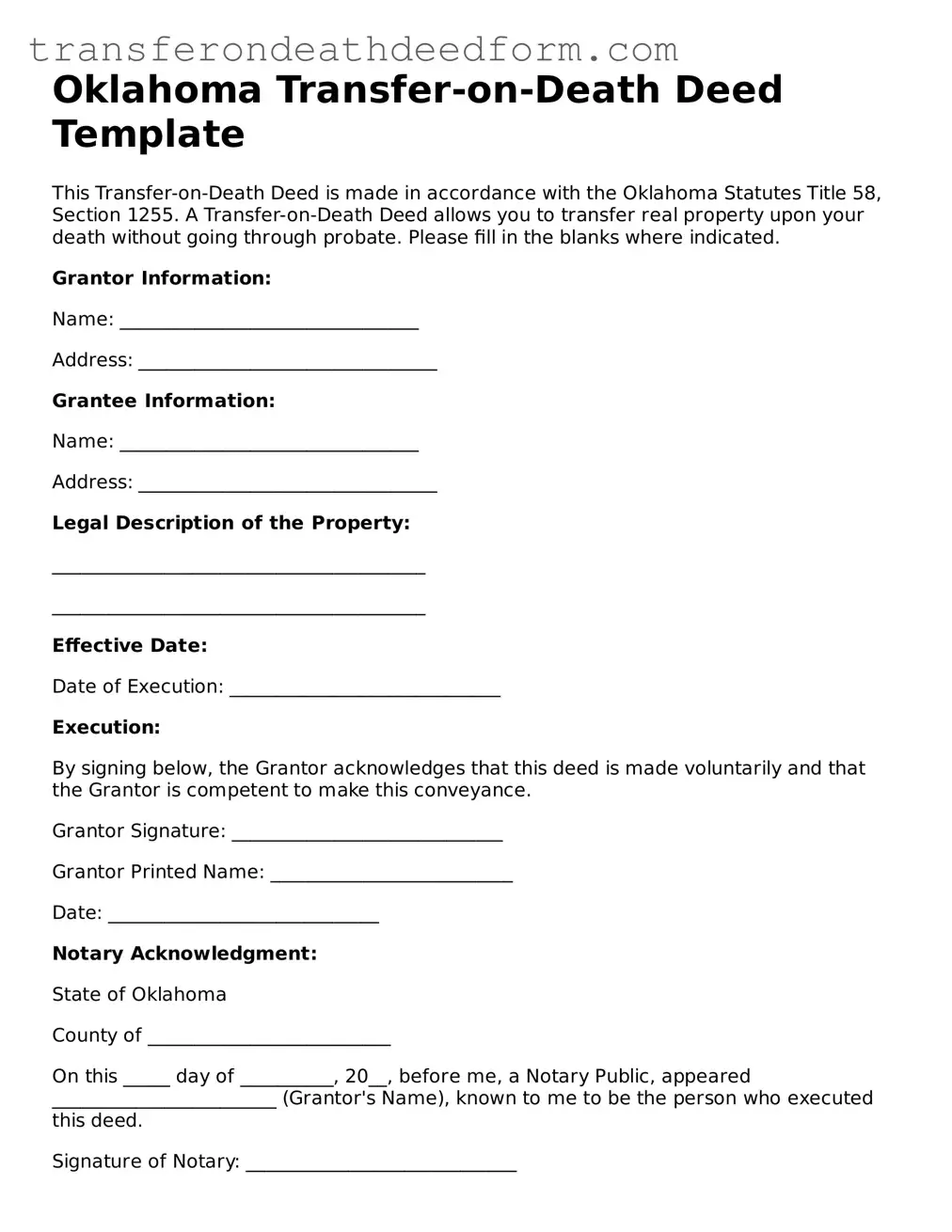Oklahoma Transfer-on-Death Deed Template
This Transfer-on-Death Deed is made in accordance with the Oklahoma Statutes Title 58, Section 1255. A Transfer-on-Death Deed allows you to transfer real property upon your death without going through probate. Please fill in the blanks where indicated.
Grantor Information:
Name: ________________________________
Address: ________________________________
Grantee Information:
Name: ________________________________
Address: ________________________________
Legal Description of the Property:
________________________________________
________________________________________
Effective Date:
Date of Execution: _____________________________
Execution:
By signing below, the Grantor acknowledges that this deed is made voluntarily and that the Grantor is competent to make this conveyance.
Grantor Signature: _____________________________
Grantor Printed Name: __________________________
Date: _____________________________
Notary Acknowledgment:
State of Oklahoma
County of __________________________
On this _____ day of __________, 20__, before me, a Notary Public, appeared ________________________ (Grantor's Name), known to me to be the person who executed this deed.
Signature of Notary: _____________________________
My Commission Expires: __________________________
Remember, completing this deed correctly is essential for a valid transfer. Consider seeking advice from a qualified professional if you have questions.
